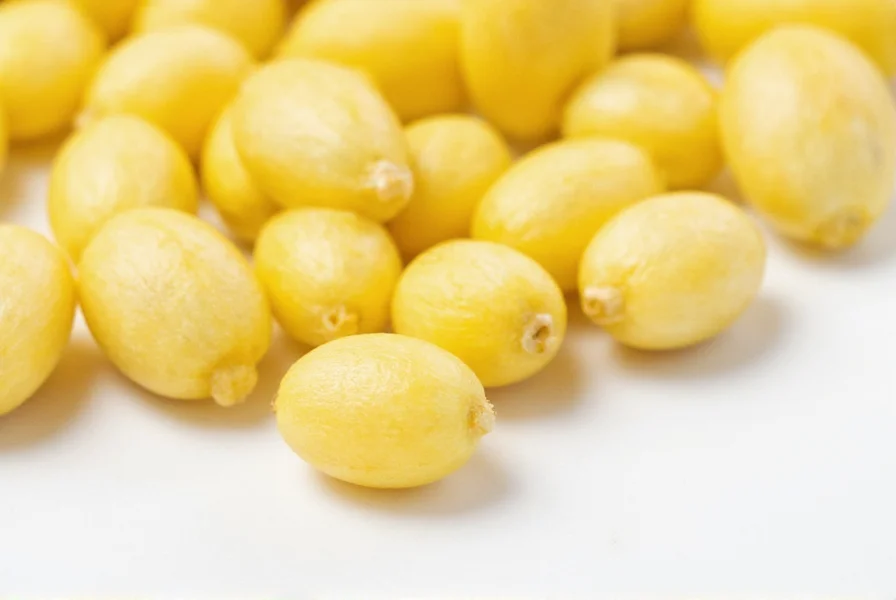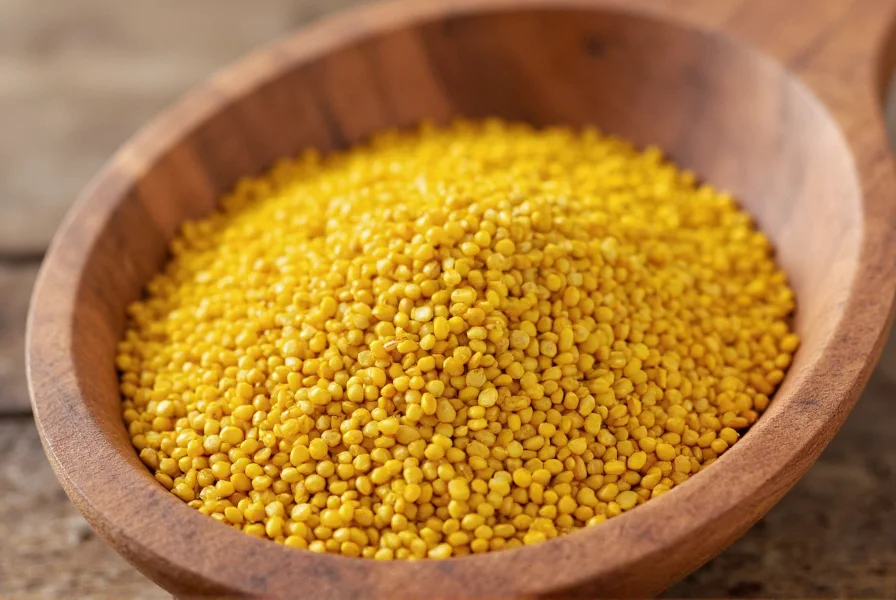When searching for an image of mustard seed, you're likely looking for visual confirmation of these famously small seeds referenced in historical and religious texts. Understanding their actual appearance helps separate fact from metaphor, as the mustard seed's diminutive size contrasts dramatically with the substantial plants it produces.
Visual Characteristics of Mustard Seeds
Mustard seeds come in three primary varieties, each with distinct visual characteristics:

| Mustard Seed Type | Color | Size (Diameter) | Source Plant |
|---|---|---|---|
| Yellow/White | Pale yellow to light brown | 1.0-1.5 mm | Sinapis alba |
| Brown | Reddish-brown | 1.0-2.0 mm | Brassica juncea |
| Black | Dark brown to black | 1.5-2.0 mm | Brassica nigra |
Size Comparison: Understanding the Scale
The phrase "as small as a mustard seed" has become proverbial because of how remarkably tiny these seeds are. To visualize their actual size:
- A single mustard seed measures approximately 1-2 millimeters across
- About 10-15 seeds placed side-by-side would span the width of a standard pencil eraser
- It takes roughly 6-8 mustard seeds to equal the size of a single sesame seed
- Compared to a dime, mustard seeds appear as mere specks

Botanical Context: From Tiny Seed to Substantial Plant
The remarkable aspect of mustard seeds isn't just their small size but what they produce. Mustard plants (genus Brassica and Sinapis) grow from these minute seeds into substantial plants reaching 3-8 feet in height. This dramatic transformation explains why mustard seeds became a powerful metaphor in ancient teachings about potential and growth.
Mustard seeds contain all the genetic information needed to produce:
- Deep taproot systems that can penetrate compacted soil
- Branching stems with broad leaves
- Yellow flowering clusters that develop into seed pods
- Multiple generations of new seeds (each pod contains 8-20 seeds)
Historical and Cultural Significance
The image of mustard seed appears prominently in historical texts, most notably in the New Testament parable where Jesus compares the kingdom of heaven to a mustard seed. This reference specifically highlights how something seemingly insignificant can produce remarkable results.
Historically, mustard seeds have been:
- Used as currency in some ancient cultures due to their small, uniform size
- Traded along spice routes for culinary and medicinal purposes
- Employed as a natural dye in textile production
- Featured in traditional medicine systems worldwide
Practical Applications Today
Despite their small size, mustard seeds serve numerous practical purposes in modern contexts:
Culinary Uses
Chefs and home cooks use different mustard seed varieties to create distinctive flavor profiles. Yellow seeds produce milder flavors ideal for American-style yellow mustard, while brown and black seeds create the pungent heat characteristic of Dijon and spicy Indian mustards.
Gardening and Agriculture
Gardeners value mustard plants as:
- Companion plants that repel certain pests
- Soil conditioners that break up compacted earth
- Cover crops that suppress weeds
- Trap crops that lure pests away from more valuable plants
Scientific Perspective on Mustard Seed Size
From a botanical standpoint, the small size of mustard seeds represents an evolutionary adaptation. Their compact form allows for efficient dispersal by wind, water, and animals. The hard seed coat protects the embryo during transit while remaining thin enough to allow germination when conditions are favorable.
Research shows that mustard seeds can remain viable for up to 40 years under proper storage conditions, demonstrating how nature packages remarkable potential in these tiny containers.
Frequently Asked Questions
What does a mustard seed actually look like?
A mustard seed appears as a small, nearly spherical grain measuring 1-2 millimeters in diameter. Yellow mustard seeds are pale yellow to light brown, brown mustard seeds have a reddish-brown hue, and black mustard seeds range from dark brown to nearly black. Under magnification, you can see a smooth, slightly shiny surface with a tiny hilum (scar) where the seed was attached to the plant.
How small is a mustard seed compared to other common seeds?
Mustard seeds are among the smallest commercially used seeds. They're significantly smaller than sesame seeds (which are about 3-4mm long), poppy seeds (1mm but more oval), and chia seeds (2mm but more oval with mottled appearance). Approximately 6-8 mustard seeds placed end-to-end would equal the length of a single sesame seed.
Why are mustard seeds referenced as being particularly small?
Mustard seeds gained historical significance as symbols of smallness because, despite their tiny size (1-2mm), they grow into relatively large plants (3-8 feet tall). This dramatic contrast between the seed's minuscule starting point and the substantial plant it produces made it a powerful metaphor for potential and growth in ancient teachings, particularly in the well-known biblical parable.
Can you see the details of a mustard seed with the naked eye?
With normal vision, you can see mustard seeds as small dots, but discerning specific details requires magnification. At close range (within 6-8 inches), you might distinguish the basic color (yellow, brown, or black) and general round shape, but features like the hilum (attachment scar) or subtle surface texture typically require at least 5x magnification to observe clearly. This explains why historical references to mustard seeds focused on their collective smallness rather than individual characteristics.
What's the difference between yellow, brown, and black mustard seeds?
Yellow mustard seeds (from Sinapis alba) are pale yellow to light brown and measure 1.0-1.5mm. They have the mildest flavor. Brown mustard seeds (Brassica juncea) are reddish-brown and slightly larger at 1.0-2.0mm, with a hotter, more pungent taste. Black mustard seeds (Brassica nigra) are the darkest (dark brown to black) and largest at 1.5-2.0mm, offering the most intense heat and complexity of flavor. These visual differences correspond directly to their culinary applications and flavor profiles.











 浙公网安备
33010002000092号
浙公网安备
33010002000092号 浙B2-20120091-4
浙B2-20120091-4